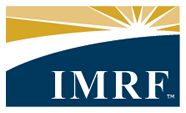Effects of Assumed Rate of Return Reduction on IMRF Employers and Members
In December 2018, the IMRF Board of Trustees reduced the return it assumes it will earn on IMRF’s investment portfolio from 7.5% to 7.25%. This change affects IMRF employers and members in certain ways.
How does this affect IMRF employers?
The change affects employer contribution rates starting in 2020.
IMRF retirement benefits and member contributions are fixed by state law. The difference between the cost of IMRF retirement benefits and member contributions must be paid by a combination of employer contributions and investment earnings. The greater the investment earnings, the less employer contributions needed to fund IMRF retirement benefits. This relationship reflects the nature of a defined benefit pension plan like IMRF.
Each year, IMRF calculates a contribution rate for each IMRF employer. A significant factor in the contribution rate calculation is the assumed rate of return on investments. For 2019 rates, the calculation continues to assume IMRF will earn 7.5% on its investments, and utilizes financial data from December 31, 2017. Starting in 2020, the calculation will assume IMRF will earn 7.25% on its investments, and will utilize financial data from December 31, 2018. Since the return assumption is decreasing slightly, employer contribution rates will increase slightly in 2020.
IMRF estimates the average employer contribution rate in 2020 will range between 10.15% and 10.65% of payroll. This estimate is higher than the 2019 average employer contribution rate of 9.06%, but lower than the 2018 rate of 11.24%. Each employer’s actual rate will vary based on its IMRF assets, liabilities, and workforce demographics.
The change affects employer financial planning, accounting, and reporting documents starting in 2019
While the assumption change won’t effect employer rates until 2020, it will effect multiple financial planning, accounting, and reporting calculations involving IMRF employer accounts in 2019. In addition to the employer rate calculation, the assumption change also effects the calculation of each employer’s unfunded liabilities, and as a result, the calculation of its funded status. The following financial reporting and planning documents that employers receive from IMRF in 2019 will reflect these calculation changes:
- GASB 50 statement
- GASB 68 statement
- Preliminary Rate Notice
- Final Rate Notice
The return assumption change will first effect Employer Account Reserve Statements in 2020.
How does this affect IMRF members?
The change affects interest on IMRF Voluntary Additional Contributions (VAC).
IMRF members may make VAC to supplement their standard IMRF pension. Interest paid on VAC is linked to the IMRF assumed rate of return. Therefore, a decrease to the assumed rate of return lowers the rate of interest earned on VAC.
IMRF credits VAC interest on December 31 each year, based on the VAC in the member’s account on January 1 of the same year. Interest credited on December 31, 2018, was 7.5%. Due to the change, interest credited on December 31, 2019, will be 7.25%.
IMRF will inform members with VAC on file of the interest rate change. If the IMRF assumed rate of return changes again in the future, IMRF members should expect the VAC interest rate to change as well.
The change affects any interest on member contribution refunds paid either at retirement or as death benefits.
Member contributions may be refunded with interest in certain circumstances at retirement, or they may be refunded with interest in certain circumstances in the form of death benefits. In these instances, the rate of interest paid will be affected. In the vast majority of IMRF retirements, member contributions are not refunded but returned to members through pension payments.
The change affects purchasing of IMRF past service credit.
In certain circumstances, IMRF members may purchase IMRF past service credit. IMRF members may purchase past service credit after previously taking a refund of IMRF member contributions; when their employers first join IMRF; when members aren’t properly enrolled; and when they previously served in the military.
When members purchase additional past service credit, interest is included in calculating the amount owed. The amount of interest paid it linked to the assumed rate of return. As a result, an interest rate of 7.25% will be charged on past service purchases for service starting January 1, 2019, or later.

